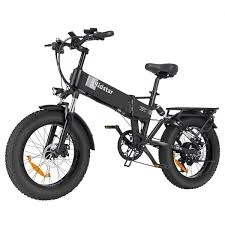9 月 . 16, 2024 13:21 Back to list
High-Performance Mountain Bike Shifters for Seamless Gear Changes
Understanding Mountain Bike Shifters
Mountain biking is an exhilarating sport that combines the thrill of speed, the beauty of nature, and the challenge of rugged terrains. A crucial component of a mountain bike is the shifter, which plays an essential role in the bike's overall performance. By understanding how mountain bike shifters work, riders can enhance their experience on the trails and make more informed decisions when selecting components for their bikes.
Mountain bike shifters are mechanical devices that allow riders to change gears while cycling. They are typically located on the handlebars for easy access and are connected to the bike’s derailleur via cables. The derailleur moves the chain between different gears on the cassette (the collection of gears on the rear wheel), allowing cyclists to adjust their pedaling resistance according to the terrain.
There are two primary types of mountain bike shifters trigger shifters and twist shifters. Trigger shifters are considered by many to be the more precise option. They consist of two buttons or levers, one for shifting up to a larger gear (easier gear for climbing), and one for shifting down to a smaller gear (harder gear for descending or accelerating). Trigger shifters tend to provide quicker gear changes and are favored by competitive riders.
mountain bike shifter

On the other hand, twist shifters involve rotating the grip on the handlebar to change gears. This system is often found on entry-level mountain bikes, as it can be more intuitive for novice riders. However, many experienced cyclists prefer the trigger style for its responsiveness and ease of use, especially during technical sections of a trail where quick gear changes might be necessary.
When selecting shifters for a mountain bike, it is essential to consider compatibility with the bike’s drivetrain components, including the chain, cassette, and derailleur. This compatibility ensures that shifting is smooth and reliable. Most modern bikes come with 1x (one chainring) or 2x (two chainrings) setups, and shifters must match the specific configuration.
Another factor to consider is the gear ratio. Mountain biking often requires a wide range of gears to tackle steep climbs and fast descents. Shifters designed for mountain bikes typically offer a broader range compared to road bike shifters, allowing for better performance across various terrains.
In conclusion, mountain bike shifters are vital components that significantly impact a rider's experience. Understanding the different types, their functions, and how they integrate with other bike components can help riders choose the best options for their needs. Whether navigating steep climbs or speeding down a trail, a well-functioning shifter is key to enjoying every ride. As technology continues to evolve, mountain bikers can look forward to even more innovative and efficient shifting systems in the future.
-
The Main Application Scenarios of Mountain Bike
NewsOct.29,2024
-
Suggestions for Selecting and Maintaining Mountain Bike
NewsOct.29,2024
-
Characteristics of Kids Balance Bike
NewsOct.29,2024
-
Characteristics of Baby Stroller
NewsOct.29,2024
-
Characteristics and Advantages of Mountain Bike
NewsOct.29,2024
-
Baby Stroller Purchasing Suggestions
NewsOct.29,2024
-
Suggestions for Purchasing Kids Balance Bike
NewsOct.09,2024

